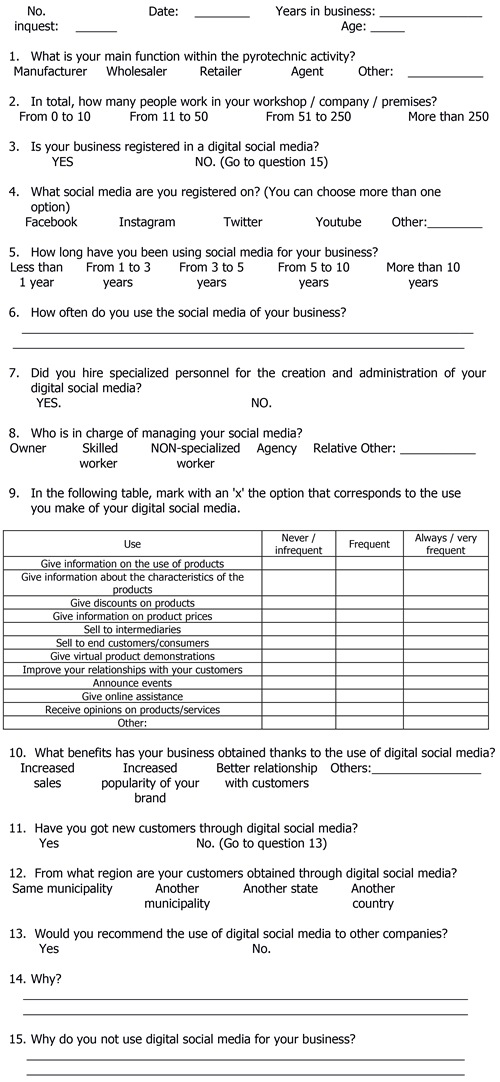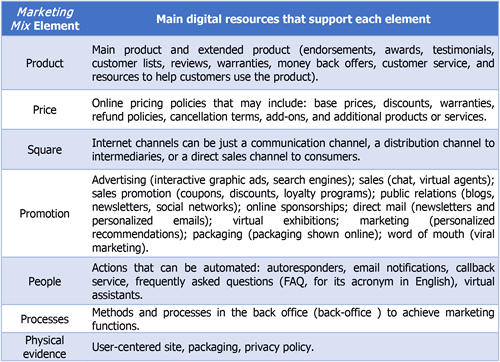
doi.org/10.15198/seeci.2020.52.73-93
RESEARCH
USE OF DIGITAL SOCIAL MEDIA AS A MARKETING STRATEGY IN PYROTECHNIC SMEs OF TULTEPEC IN THE STATE OF MEXICO
USO DE REDES SOCIALES DIGITALES COMO ESTRATEGIA DE MERCADOTECNIA EN PYMES PIROTÉCNICAS DE TULTEPEC EN EL ESTADO DE MÉXICO
USO DAS REDES SOCIAIS DIGITAIS COMO ESTRATÉGIA DE MARKETING EM PME PIROTÉCNICAS DE TULTEPEC NO ESTADO DE MÉXICO
Alan Roberto Villagómez Manrique1
Elizabeth Acosta Gonzaga1
1National Polytechnic Institute (IPN). Mexico
[1] Alan Roberto Villagómez Manrique: Student of the Master of Science in Interdisciplinary Studies for SMEs in the Interdisciplinary Professional Unit of Engineering and Social and Administrative Sciences (UPIICSA) of the National Polytechnic Institute. phys.villa@outlook.com
[2] Elizabeth Acosta Gonzaga: Professor-Researcher of the Section of Postgraduate Studies and Research of the Interdisciplinary Professional Unit of Engineering and Social and Administrative Sciences (UPIICSA) of the National Polytechnic Institute. eacostag@ipn.mx
ABSTRACT
The use of digital social media (DSM) as a marketing strategy has become a fundamental practice for companies around the world. In Mexico, 99.8% of enterprises are small and medium-sized (SMEs) and, despite their importance, there is little literature on the use of DSM as a marketing strategy in Mexican SMEs. Also, the pyrotechnic industry of Tultepec, State of Mexico, produces 50% of the national pyrotechnics, employs up to 60% of the local population and is composed mainly of SMEs. Given the relevance of this production system, the objective of this piece of research is to determine the percentage of Tultepec pyrotechnics companies that use DSM as a marketing strategy, the main uses they are given and, in their absence, the reasons for not using them. To this end, questionnaires were applied to the owners of various companies in the pyrotechnics production chain (raw material stores, manufacturers and intermediaries) and it was found that only 15% of respondents use DSM as a marketing strategy and use them mainly to position the brand and reach larger audiences. Finally, it was found that the main reason for not using them is the insecurity and experiences related to crime. The results obtained show the need for a training strategy for business owners that leads to a safe and effective use of DSM as a marketing tool.
KEYWORDS: digital social media, uses, marketing, Mexico, pyrotechnics, smes, insecurity
RESUMEN
El uso de redes sociales digitales (RSD) como estrategia de mercadotecnia se ha convertido en una práctica fundamental para las empresas de todo el mundo. En México, el 99.8% de las empresas son de tamaño pequeño y mediano (pymes) y, pese a su importancia, existe poca literatura sobre el uso de RSD como estrategia de mercadotecnia en las pymes mexicanas. Asimismo, la industria pirotécnica de Tultepec, Edo. de Méx., produce el 50% de la pirotécnica nacional, emplea hasta el 60% de la población local y se compone principalmente por pymes. Dada la relevancia de este sistema productivo, el objetivo de la investigación es determinar el grado de adopción de RSD como estrategia de mercadotecnia por parte de las empresas pirotécnicas de Tultepec, los principales usos que les dan y, en su ausencia, las razones para no utilizarlas. Para ello, se aplicaron cuestionarios a los dueños de diversas empresas del encadenamiento productivo de pirotecnia (tiendas de materias primas, fabricantes e intermediarios) y se encontró que sólo el 15% de los encuestados utilizan RSD como estrategia de mercadotecnia y las utilizan, principalmente para el posicionamiento de la marca y alcanzar mayores audiencias. Finalmente, se encontró que la principal razón para no utilizarlas es la inseguridad y experiencias relacionadas con la delincuencia. Los resultados obtenidos, exhiben la necesidad de una estrategia de capacitación para los empresarios que conduzca a un uso seguro y eficaz de RSD como herramienta de mercadotecnia.
PALABRAS CLAVE: redes sociales digitales, usos, mercadotecnia, México, pirotecnia, pymes, inseguridad
RESUMO
O uso das redes sociais digitais (RSD) como estratégia de marketing se converteu numa prática fundamental para as empresas do mundo inteiro. No México, o 99.8% das empresas são de pequeno e médio porte (PME) e, apesar da sua importância, existe pouca literatura sobre o uso de RSD como estratégia de marketing nas PME mexicanas. Da mesma forma, a indústria pirotécnica de Tultepec, Edo. do Méx., produz 50% da pirotecnia nacional, emprega até 60% da população local e se compõe principalmente por PME. Dada à relevância deste sistema produtivo, o objetivo da pesquisa é determinar o grau de acolhimento das RSD como estratégia de marketing por parte das empresas pirotécnicas de Tultepec, os principais usos que eles lhes dão e, na sua falta, os motivos para não usa-as. Para isto, se aplicaram questionários aos donos de diversas empresas da cadeia produtiva de pirotecnia (lojas de matérias-primas, fabricantes e intermediários) e se descobriu que somente 15% dos entrevistados usam RSD como estratégia de marketing e as utilizam, principalmente para o posicionamento da marca e para conseguir maiores audiências. Finalmente, se encontrou que a principal motivação para não utilizá-las é a insegurança e experiências relacionadas com a delinquência. Os resultados obtidos, mostram a necessidade de uma estratégia de capacitação para os empresários que leve ao uso seguro e eficaz das RSD como ferramenta de marketing.
PALAVRAS CHAVE: redes sociais digitais, usos, marketing, México, pirotecnia, PME, insegurança
Correspondence:
Alan Roberto Villagómez Manrique. National Polytechnic Institute (IPN). Mexico. phys.villa@outlook.com
Elizabeth Acosta Gonzaga. National Polytechnic Institute (IPN). Mexico. elz.acosta.gonzaga@gmail.com
Received: 12/07/2019
Accepted: 19/02/2019
Published: 15/07/2020
How to cite the article:
Villagómez Manrique, A. R. & Acosta Gonzaga, E. (2020). Use of digital social media as a marketing strategy in pyrotechnic smes of Tultepec in the state of Mexico. [Uso de redes sociales digitales como estrategia de mercadotecnia en pymes pirotécnicas de Tultepec en el estado de México]. Revista de Comunicación de la SEECI, (52), 73-93. doi: http://doi.org/10.15198/seeci.2020.52.73-93
Recovered from http://www.seeci.net/revista/index.php/seeci/article/view/610
1. INTRODUCTION
In Mexico, micro, small and medium sized enterprises (SMEs) have a key role in the economy. According to data from the Economic Censuses conducted by the National Institute of Statistics and Geography (INEGI), in 2014 5 654 014 economic units were recorded, 99.8% out of which have less than 251 employees; that is, more than 99% of the economic units in Mexico belong to the SME category. Besides, it was found that SMEs generate 7 out of every 10 jobs and contributed 35.9% of gross domestic product (GDP) in 2013; trade being the economic activity that generates the largest number of jobs.
Regarding the pyrotechnic industry, at the national level pyrotechnics has had a strong development in recent years, leaving an economic spill of 1,200 million pesos per year (Ortega, 2018; Rincón, 2016; Ríos, 2018). Of all the national production, it is estimated that 70% comes from the State of Mexico and 50% comes from Tultepec; which leaves 400,000,000 to 600,000,000 pesos as gains for the municipality (Rincon, 2016; Rios, 2018; Solis, 2018). Tultepec is one of the 125 municipalities of the State of Mexico located in the XIV region, in the northeast portion of the entity; In agreement with the Mexican Institute of Pyrotechnics (IMEPI), it started with the production of fireworks in the early 19th century, becoming the pioneer of rocket manufacturing in Mexico and achieving recognition as “the capital of pyrotechnics”. On the other hand, the Department of Craft Development of Tultepec indicates that the production of fireworks is the main economic activity in the region, which employs up to 60% of the population in some of the activities related to the commercialization of pyrotechnics. In this sense, the production of pyrotechnics is highly concentrated in Tultepec, so its study can be significant for the understanding of the entire industry. Likewise, although there is no precise information on the total number of companies participating in the entire pyrotechnics production system in Tultepec, in interviews with the media it has been revealed that there are a total of 300 stores for the sale of pyrotechnic toys located in the San Pablito market and 178 authorized workshops for the manufacture of pyrotechnics (Solís, 2018).
1.1. Digital social media and their relevance for SMEs
Digital social media, also known as social media or simply social networks have generated a lot of research on the implementation techniques used by companies and on the benefits and uses these companies obtain by including them as part of their strategies. However, the intuitive understanding of the term caused little attention to be paid to building a uniform and consistent definition. In this context, Kaplan & Haenlein (2010) proposed a definition widely accepted within the scientific community: “social media is a group of Internet-based applications built on the ideological and technological foundations of Web 2.0 that allow the creation and sharing of user-generated content”. Inside this broad definition we can find platforms like Facebook, YouTube, Wikipedia and Pinterest, among others; whose characteristics are different and make them susceptible to classification.
One feature they have in common is that, recently, for-profit and nonprofit organizations from all economic sectors and primary, secondary and tertiary industries have used them in many different ways as part of their strategy to increase their presence in society (Chan & Kumar, 2017; Crammond, Omeihe, Murray, & Ledger, 2018; Waters, Burnett, Lamm, & Lucas, 2009). However, organizations often consider social media to be individual elements that operate independently (Hanna, Rohm, & Crittenden, 2011); while in the scientific literature it is proposed that social media should be considered part of an ecosystem of interrelated elements, involving both traditional and digital media (Hanna et al., 2011), to exploit to the maximum the potential to support the strategic objectives of the company.
Another aspect that reinforces the need for the study of digital social media is the development of Web 2.0, which allowed consumers to take a more active role in the marketing exchange processes; going from being mere recipients of information to becoming an extension of the organization capable of creating content, designing new products or services or producing promotional messages (Hanna et al., 2011). That is, the modern consumer seeks to connect with the companies he buys from and with other consumers who can offer relevant information (Garretson, 2008). In this new ecosystem, marketing can no longer focus solely on capturing the attention of society but should also have strategies to retain their attention and connect with them. Therefore, the use of digital social media to strengthen the links between the organization and society has become an essential practice.
1.2. Trends in research on digital social media in SMes
There is wide literature on the uses that SMEs in various sectors give to social media, among which are: achieving their marketing objectives, attracting new customers, cultivating relationships with current customers, positioning their products through word-of-mouth advertising, reaching broad audiences (Ainin, Parveen, Moghavvemi, Jaafar, & Shuib, 2015), estimating customer perception of new products and promotions, receiving customer feedback (Wamba & Carter, 2014) and seeking innovations in their products or services (Scuotto, Del Giudice, Peruta, & Tarba, 2017).
Additionally, the research carried out detects various benefits from the use of digital social media such as: improvement of knowledge management in real time between agents both internal and external to the organization (Crammond et al., 2018), driving capital growth, which leads to higher quality organizational knowledge; reducing uncertainty in investments related to product or service innovation (Scuotto et al., 2017) and improvement in the internationalization process (Zhou, Wu, & Luo, 2007), to name just a few.
On the other hand, academics have focused their attention on determining the elements that must be considered for an adequate adoption of social media (Kaplan & Haenlein, 2010; Lashgari, Sutton-Brady, Solberg Søilen, & Ulfvengren, 2018) and the factors that influence in the adoption of social media (Ainin et al., 2015; Braojos-Gomez, Benitez-Amado, & Javier Llorens-Montes, 2015; Wamba & Carter, 2014).
Despite this vast amount of information, there are just very few studies on the use of digital technology in SMEs to achieve objectives related to marketing (e-marketing or digital marketing) and even fewer on the use and adoption of social media in Mexican SMEs (Cota & Antonio, 2016; Gutierrez-Leefmans, Nava-Rogel, & Trujillo-Leon, 2016). So, the above discussion shows the need for more empirical studies on the evident use of RSD in SMEs and, mainly, in the SMEs of Mexico, which have so much prominence in the national economy. Therefore, this paper aims to study the use and adoption of RSD in SMEs in the pyrotechnics industry in Mexico, the results of which will serve SMEs to know the benefits obtained from its implementation and use by competition; and to the local government, for the creation of dissemination and training campaigns in digital social media for business purposes.
2. OBJETIVES
Despite the importance of SMEs for Mexico, there is enough scientific literature on the level of use of the digital social media in Mexican SMEs. Therefore, the objective of this piece of research is to determine the degree of adoption of RSD and its use as a marketing strategy in SMEs in the pyrotechnic industry of Tultepec, State of Mexico.
3. METHODOLOGY
To meet the goal of this piece of research, we selected those agents whose main economic activity, at the time of conducting the surveys, were directly related to pyrotechnics (manufacturing, marketing, or any other related or auxiliary activity) and with location within Tultepec Municipality. A total of 20 questionnaires were applied to owners of pyrotechnical companies in Tultepec; such questionnaires were applied in the months of October 2018 to January 2019 in three main locations within said municipality: “San Pablito” rocket market, “La Saucera” workshop area and the raw material stores.
The instrument for data collection is based on the questionnaire used in (Cota & Antonio, 2016), which is intended to determine the percentage of firms in Guadalajara that have used digital social media and the benefits that this strategy has brought them. The questionnaire consists of three parts: 1) general data, 2) adoption and uses, and 3) benefits (see annex). Section 2 (adoption and use) was adapted for SMEs in the pyrotechnic industry. In addition, a table of uses of RSD was created, based on the classification of the main digital resources that support the marketing mix of 7p's proposed by (Gutierrez-Leefmans et al., 2016). Marketing mix is the set of fundamental elements that guide marketing strategies (Gutierrez-Leefmans et al., 2016). Initially, marketing mix consisted of four elements: price (price), product (product), place (square) and promotion (promotion) (Pereault & McCarthy, 2002), then the theory evolved until arriving at 7 p's: price, product, place, promotion, people (people), process (process) and physical evidence (physical evidence) (Booms & Bitner, 1981). Based on this set of variables, Chaffey (2015) added the digital resources that correspond to each variable of the 7 p’s, as shown in the following table.
Table 1. Main digital resources that support marketing mix. Modified from Gutierrez-Leefmans et al. (2016).

From the above table, a table of applications (Table 2) was constructed to determine the use pyrotechnical SMEs make of digital social media and classify these uses according to the support they provide to marketing mix 7 p's, using a scale of frequency of use.
For data analysis, descriptive statistics was used and, as a method for validation of data results, theoretical saturation was used (Denzin & Lincoln, 2005) to determine the time of completion of data collection. In addition, the risk of a possible explosion, action PROPI to economic pyrotechnical activity, was another factor considered to complete the process of collection.
4. RESULTS AND DISCUSSION
The results of the application of 20 questionnaires to several agents involved in the pyrotechnics production chain are shown below: The respondents are classified as suppliers of raw materials (10%), manufacturers (55%), wholesalers (20%) and retailers (15%). Regarding the size of the companies, the number of employees working in these companies corresponds to the category of micro (75%) and small sized enterprises (25%).
Regarding digital social media, 85% of the respondents answered they are not registered in any digital social media and only 15% reported using some RSD (see figure 1). This exemplifies the incipient state of the level of use of social media as a marketing strategy in said Mexican industry.
Source: self-made.
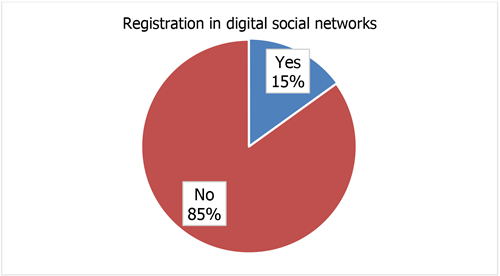
Graph 1. Registration of pyrotechnic companies in Tultepec in social media.
For the companies that affirmed they use some RSD, the most used social media is Facebook (33%) followed by YouTube (22 %), although they also use other types of networks such as Twitter and Instagram (see Graph 2). In addition, it was found that 22% of companies use Web portals or platforms. Respondents did not mention any other network, meaning that they remain in the most popular social media.
Source: self-made.
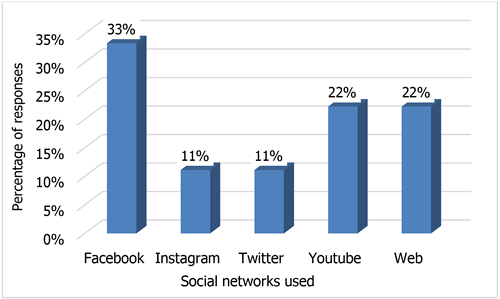
Graph 2. Main social media used by pyrotechnics companies in Tultepec.
With respect to the amount of time in the use of social media, the results (see Graph 3) show that, in some cases they have been used for over 10 years, while in others they are being used recently. In addition, regarding the frequency with which they use them (see Graph 4): 67% of companies admit to using them daily, while 33% state that they use them only in the high demand season (September-December). Such a finding suggests that employers recognize the importance of following up the activities on social media.
Source: self-made.
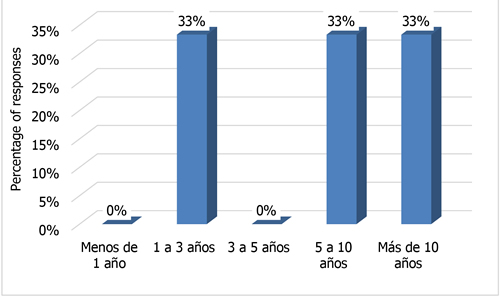
Graph 3. Number of years using digital social media.
Source: self-made.
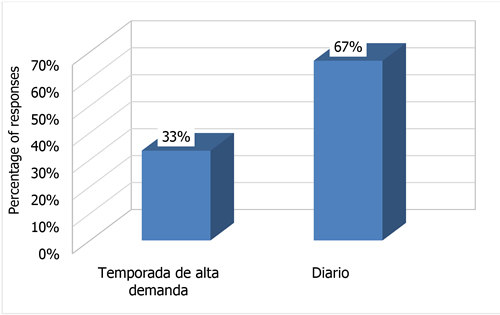
Graph 4. Frequency of use of digital social media.
While some SMEs use the RSD as a marketing strategy, entrepreneurs agree that social media are not properly administered by a person with specialized training (community manager), but in most cases it is administered by a family member (Graphs 5 and 6). Which implies that there is not (or at least it is unlikely) any planning of the marketing strategy to be implemented that includes specific metrics to help determine reliably the impact of the use of social media. This reinforces what was stated by (Becker & Lee, 2019) who argue that larger companies make more effective use of their social media.
Source: self-made.
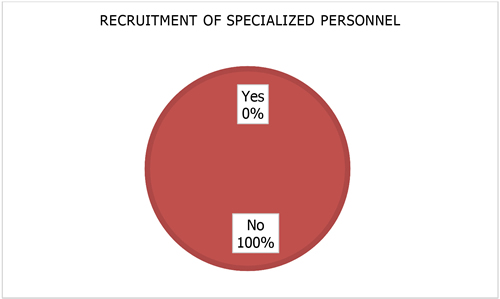
Graph 5. Training of personnel in charge of digital social media.
Source: self-made.
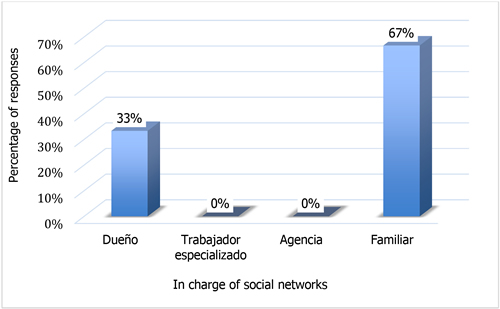
Graph 6. Personnel in charge of digital social media.
On the other hand, the uses that pyrotechnic companies have made of RSD are summarized in the following table:
Table 2. Uses of digital social media by pyrotechnic companies.
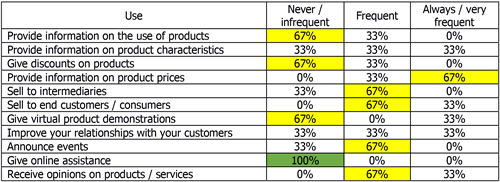
Source: self-made from the classification of 7p's of digital resources.
Table 2 summarizes the uses that companies can make of social networks to achieve their marketing objectives, such uses were determined from the classification of 7p's of digital resources (Gutierrez-Leefmans et al., 2016). The colors help to visually identify the degree of consensus responses according to the following: the boxes marked with yellow indicate partial agreement in the responses, that is to say, they indicate that a fraction of the respondents provided the same response. On the other hand, the boxes marked with green indicate total agreement, that is, that all respondents responded in the same way to the item.
According to Table 2, 67% of pyrotechnical companies that use social media as a digital strategy do not use social media to provide information on the use of their products, or to offer discounts, or to give virtual demonstrations of their products. Furthermore, it was found that 100% of SMEs that use RSD agree that they do not use them to provide online assistance on their products.
Likewise, 67% of the respondents who use RSD stated that they frequently use them to: sell to intermediaries, sell to final customers or consumers, announce events or receive opinions about products/services (McCann & Barlow, 2015; Odoom, Anning- dorson, & Acheampong, 2017; Yao, Boyer, & Baker, 2018). Finally, table 2 shows that 67% of SMEs mainly use their social media to give information on the prices of products or services.
It was found that the main uses that pyrotechnic entrepreneurs make of social media are: to position the product and reach larger audiences (Ainin et al., 2015; Odoom et al., 2017; Yao et al., 2018) and to receive customer feedback (Wamba & Carter, 2014).
In addition, respondents recognize that the use of social media has brought benefits. Graph 7 shows that the benefits obtained are: more popularity for the brand (43%), increase in sales (29%) increase in the amount of work (14%) and better relationship with customers (14%) These findings indicate that benefits are aligned with the uses that entrepreneurs make of digital social media (shown in table 2): positioning the product and receiving feedback.
Source: self-made.
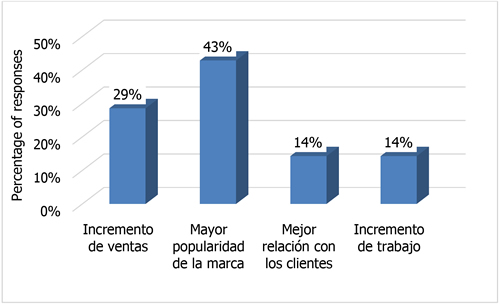
Graph 7. Benefits of using social media.
With regard to obtaining new clients, graph 8 shows that 67% of informants affirm that they have obtained new clients through the use of digital social media. With this, the results of previous research that affirm that the use of RSD as a marketing strategy can result in an increase in sales and profits for SMEs are reinforced (Yao et al., 2018). As shown in Graph 9, new customers are from other municipalities in the state (50%) and from other states of the republic (50%). This is explained by the fact that the pyrotechnics production system in Tultepec is focused on markets located outside of the municipality and, therefore, the municipality itself is not a consumer of their products (Villagómez-Manrique, 2019). On the other hand, pyrotechnics exports are strongly regulated by a large number of countries, making it difficult to reach international markets and, therefore, it is difficult to obtain foreign clients.
Source: self-made.
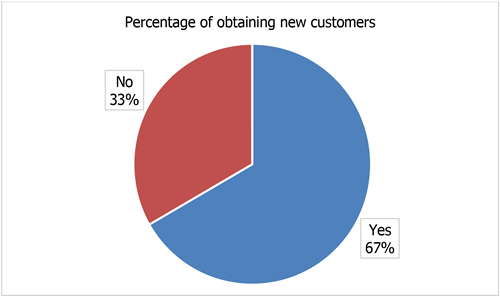
Graph 8. Obtaining new clients through the use of digital social media.
Source: self-made.
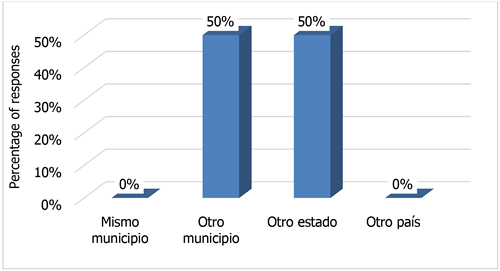
Graph 9. Origin of new clients acquired through RSD.
As regards the overall use of social media, 100% of the SMEs that use them also recommend them and the main reasons they mention to recommend them are: “It is easier to show ads to people”, “because everyone is connected” and because “indeed you get more clients”. On the other hand, 85% of respondents mentioned as reasons for not using the digital social media, which can be summed up in three categories (see Graph 10): 1) they feel they are well positioned and therefore, they do not need to use the RSD, 2) they do not know how to use the RSD and, 3) they have had problems related to crime and insecurity. This can be seen by the comments that some entrepreneurs mentioned: “many times, they only talk to you to bother you or they are extortions”, “I was recently in trouble with criminals” and “it is very dangerous”; respondents mentioned the above expressions, as a result of their experience in using digital social media as a marketing strategy. Such experiences can include robbery, extortion and kidnapping in some cases.
In relation to the insecurity in RSD, it has been found that the use of social media can involve various risks, since criminals can use them to: commit fraud, steal sensitive information, identity theft, carry out cyber espionage and commit acts of revenge, among others (He, 2012; Rose, 2011; Tayouri, 2015; Zhang & Gupta, 2018). Although Facebook is the most popular social media, it is also the RSD that reports the largest number of security risks, claiming 61% of cases (Zhang & Gupta, 2018). So, sharing too much information on the digital social media, which in turn share this information with third parties, enables misuse of this information and may create security risks (Rose, 2011).
Therefore, it is important to properly disseminate the benefits that can be obtained from the use of digital social media as part of a marketing strategy. Additionally, it is essential to train the population to make responsible use of said RSD and thus avoid sharing unnecessary information that can be used with the intention of causing harm. However, in addition to training, it is recommended to use technological tools that help manage the flow of information in RSD and can detect and repair security vulnerabilities (Tayouri, 2015).
Source: self-made.
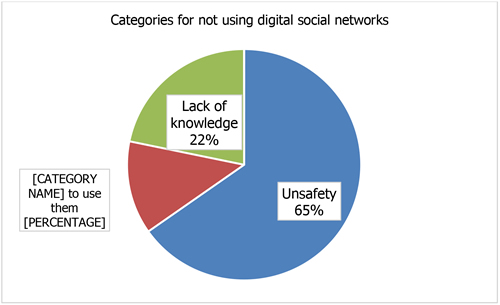
Graph 10. Main reasons for not using digital social media.
5. CONCLUSIONS
As a result of this piece of research, it can be concluded that the table of uses of digital social media prepared on the basis of the classification of 7 p's (Gutierrez-Leefmans et al., 2016) was a good instrument for the classification of the uses of digital social media and the development of this instrument in future research could lead to a standardized tool to serve for a more exhaustive and updated classification.
On the other hand, the level of use of social media in the pyrotechnics production system in Tultepec is, in general, limited. Only 15% of respondents use them as part of their marketing strategy and just use the best known social media: Facebook, YouTube and websites. They do not hire specialized personnel to manage their networks, instead, a relative manages them (mainly their sons or daughters).
The uses pyrotechnic entrepreneurs make of digital social media are those aimed at positioning the product, reaching wider audiences and receiving feedback from customers. Consequently, the main benefits received are increased sales and an improved relationship with customers. Therefore, they all recommend their use as part of the business strategy.
In contrast, 85% of those surveyed do not use digital social media. The reasons they mentioned are: insecurity mainly, ignorance of their use and because they consider themselves to be well positioned and do not need them. The foregoing shows, firstly, a need to spread the benefits that digital social media can bring to Mexican SMEs and the most effective way to use them to achieve such benefits; and, in addition, that there are groups prone to being targets of crime due to vulnerabilities in social media, which need training in the proper use of digital tools. Improper use of RSD can be exploited to commit different kinds of crimes, so that entrepreneurs refuse to use them, discarding the possible benefits of implementing them as part of their marketing strategy.
This paper is expected to motivate the conduction of future research that expands knowledge of the use of digital social media as a marketing strategy in SMEs. In particular, research on the metrics that Mexican SMEs use to measure the impact of the use of social media and the factors that motivate their implementation as part of the business strategy is necessary.
Acknowledgments
This piece of research was conducted with the support of the National Council for Science and Technology, through the scholarship granted to students of the program of the Master’s Degree in Science in Interdisciplinary Studies in small and medium sized enterprises. Also, we thank the National Polytechnic Institute for providing the necessary resources for this piece of research.
AUTHORS
Alan Roberto Villagómez Manrique
Degree in physics. Student of the Master of Science program in Interdisciplinary Studies in small and medium-sized companies, from the National Polytechnic Institute. Program included in the PNAC of CONACYT.
phys.villa@outlook.com
Orcid ID: https://orcid.org/0000-0001-8294-5646
Google Scholar: https://scholar.google.com.mx/citations?user=IUTF_-oAAAAJ&hl=es
Elizabeth Acosta Gonzaga
PhD in Educational Research. Teacher and Researcher of the Master of Science in Interdisciplinary Studies in small and medium-sized companies of the National Polytechnic Institute. Program included in the PNAC of CONACYT.
eacostag@ipn.mx
Orcid ID: https://orcid.org/0000-0001-5413-1063
Google Scholar: https://scholar.google.es/citations?user=qPGIoZ8AAAAJ&hl=es&oi=ao
Annexes
Questionnaire used for data collection
The objectives of this questionnaire are: to know the level of adoption of social media, their use and the benefits perceived by the fireworks distributors in Tultepec, State of Mexico.
Confidentiality: It is guaranteed that for no reason will specific information from this survey be revealed, nor information that may reveal the identity or opinion of the respondent. Data processing will be statistical and for academic purposes.
Questionnaire
